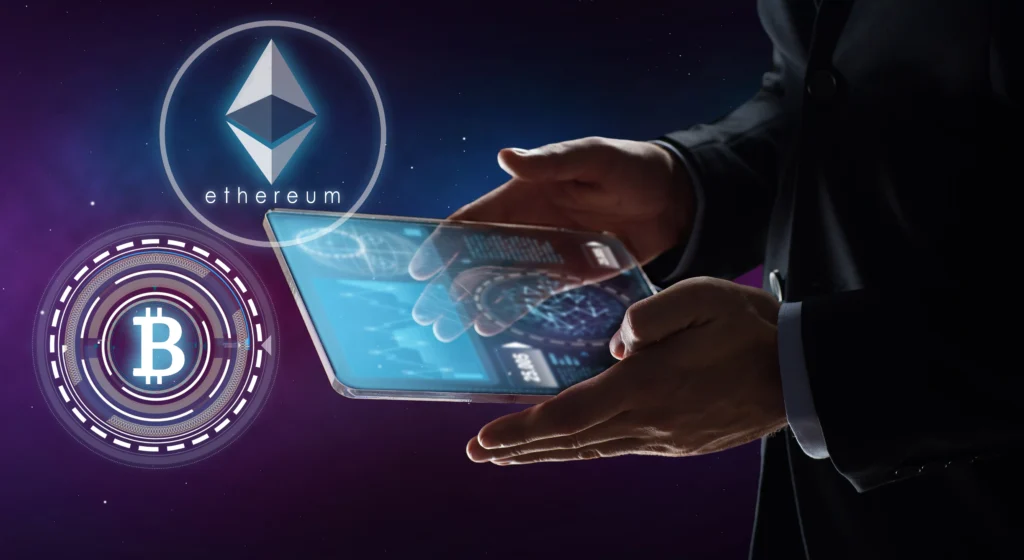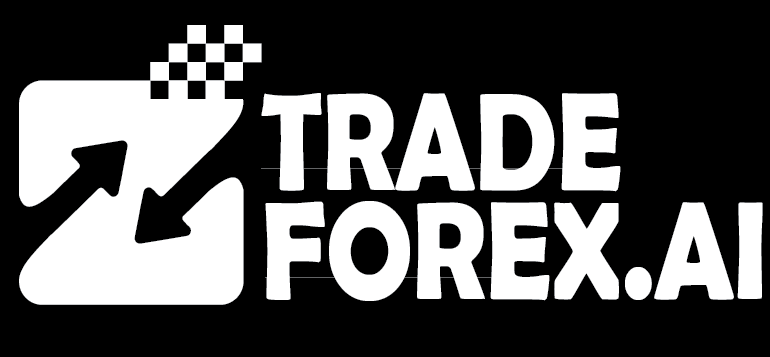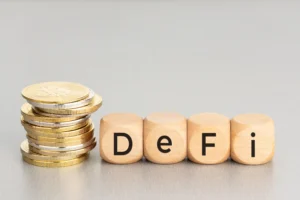Decentralized Finance (DeFi) has emerged as one of the most powerful financial innovations of the modern era. In 2025, it will stand at the centre of a global shift from traditional, centralised banking systems towards a transparent, technology-driven financial future. By using blockchain-based financial systems, DeFi enables people to access essential financial services such as lending, borrowing, trading, saving, and investing without relying on banks or brokers.
Unlike conventional finance, which depends on intermediaries to authorise and verify transactions, DeFi runs on blockchain networks, where everything operates through automation and open-source code. Smart contracts in DeFi act as digital agreements that execute transactions automatically once specific conditions are met. This eliminates delays, reduces costs, and removes human bias, allowing individuals to interact with financial systems freely and securely.
The growth of Decentralized Finance (DeFi) has been phenomenal. Millions of users now participate in decentralised applications (dApps) across platforms like Ethereum, Solana, and Binance Smart Chain. Investors can earn interest, exchange tokens, or even take crypto-backed loans all within a few clicks and without the need for institutional approval. Crypto enthusiasts are not the only ones embracing this transformation; businesses, governments, and financial institutions are incorporating DeFi principles into their everyday operations.
Understanding the workings of DeFi has become crucial for anyone seeking smarter and more independent wealth-building opportunities, as global markets continue to embrace digital transformation. The benefits of decentralised finance go far beyond profits—they symbolise financial freedom, inclusion, and innovation. In 2025, DeFi is not just an alternative system—it is the foundation for the future of wealth creation.
Core Concept of Decentralized Finance (DeFi)

Decentralized Finance (DeFi) represents an open, permissionless financial ecosystem that runs on blockchain networks. Unlike traditional systems where banks or governments oversee operations, DeFi operates through smart contracts that execute automatically when conditions are met. It gives people complete access to financial services like loans, savings, trading, and insurance without needing approval from any central authority.
DeFi operates on key foundational principles:
- Decentralized Ownership: In DeFi, users control their assets through private wallets, not banks. This self-custody ensures that individuals retain full control over their funds at all times.
- Transparency and Accessibility: Every transaction is recorded on the blockchain, which is public and immutable. Anyone can verify transactions, making the system more transparent and accountable.
- Interoperability Between Platforms: Most DeFi protocols are built to communicate with each other seamlessly. This allows users to move assets across networks and maximise opportunities.
- Open Source Development: The code behind most DeFi platforms is open source, encouraging developers worldwide to innovate, enhance, and build new financial applications.
This combination of open access, automation, and transparency has made Decentralized Finance (DeFi) a foundation for the next generation of financial growth. In 2025, as blockchain technology matures, DeFi continues to expand beyond cryptocurrencies into global economic infrastructure.
How DeFi Works in 2025
To understand how DeFi works, imagine a network of financial applications that interact directly through blockchain instead of through a central authority. DeFi applications, or dApps, function as digital ecosystems where smart contracts in DeFi act as automated middlemen, handling everything from loan approvals to yield generation.
The working model of DeFi in 2025 includes several essential layers:
- Smart Contracts as the Core Engine: Smart contracts automatically execute transactions when predefined rules are met. They replace human oversight with mathematical precision, ensuring that all actions are fair and transparent. For example, if a borrower repays a loan, the smart contract immediately releases the collateral to the lender without delay.
- Blockchain-Based Financial Systems: The blockchain stores all data publicly, providing an unalterable record of every transaction. This guarantees accuracy, eliminates fraud, and reduces the need for audits.
- Stablecoins for Stability: Many DeFi platforms use stablecoins such as USDC or DAI to mitigate cryptocurrency volatility. These digital currencies are pegged to stable assets like the U.S. dollar, enabling predictable and reliable transactions.
- Liquidity Pools and Yield Farming: Liquidity pools are shared reserves of tokens contributed by users. When traders use these pools to swap assets, liquidity providers earn transaction fees or interest. This concept allows anyone to earn passive income simply by participating.
- Decentralized Oracles: Oracles connect blockchains to real-world data. They feed information like market prices or weather data to smart contracts, allowing DeFi systems to function accurately even with external variables.
By 2025, this system has grown more advanced through artificial intelligence integration. AI algorithms now optimise trading strategies, lending rates, and yield returns — demonstrating that DeFi is no longer just an experiment but a full-fledged, data-driven ecosystem for financial independence.
The Benefits of Decentralized Finance
The benefits of decentralised finance are reshaping how individuals and organisations manage money. In 2025, DeFi stands as a practical alternative to conventional financial systems that often limit access, charge high fees, and lack transparency.
Key benefits include:
- Financial Inclusion and Accessibility: DeFi provides financial services to anyone with internet access, regardless of location or income. For example, a farmer in Kenya or a freelancer in India can borrow or invest through DeFi without dealing with banks or credit scores. This inclusivity is revolutionising global participation in financial markets.
- Transparency and Auditability: Every transaction on DeFi networks is recorded on a public ledger that anyone can audit. Unlike banks, where transactions occur behind closed doors, DeFi ensures users always know how their funds are being managed.
- Ownership and Control of Assets: In DeFi, there are no custodians. Users hold their funds in private wallets, maintaining control over deposits, trades, and withdrawals. This autonomy protects against mismanagement or institutional failures.
- High-Yield Opportunities: DeFi allows individuals to generate returns through yield farming, staking, and liquidity provision. These processes distribute network rewards directly to users, often offering returns significantly higher than traditional savings or fixed deposits.
- Efficiency and Cost Reduction: Since intermediaries are eliminated, DeFi transactions are cheaper and faster. Cross-border payments that once took days now complete within minutes, reducing global remittance costs dramatically.
In 2025, these benefits make Decentralized Finance (DeFi) the go-to ecosystem for people seeking financial growth through technology-driven independence.
Real-World Applications of DeFi in 2025
DeFi is no longer a futuristic idea; it is now a practical system used daily by millions of people. Its influence extends into every corner of finance — from personal banking to corporate operations.
1. Decentralized Lending and Borrowing: Platforms like Aave and MakerDAO allow users to lend digital assets and earn consistent interest. Borrowers can use their cryptocurrency as collateral to access liquidity instantly, bypassing banks and credit checks. This makes borrowing easier and faster for individuals and businesses.
2. Decentralized Exchanges (DEXs): Exchanges like Uniswap and PancakeSwap let users trade directly with one another using liquidity pools. Traders maintain complete control of their funds, unlike traditional exchanges that require users to deposit assets into centralised wallets.
3. Stablecoin Payments and Remittances: Stablecoins have become a crucial bridge between traditional and decentralised finance. They enable fast, low-cost global transactions, especially in countries with unstable banking systems. For example, remote workers in Africa can now receive payments in USDC directly to their wallets within seconds.
4. Decentralized Insurance: Protocols such as Nexus Mutual and Etherisc automate the insurance process. Instead of manual claims, smart contracts in DeFi trigger instant payouts when certain conditions are met, such as a smart contract breach or a flight delay.
5. Tokenised Real-World Assets: Through tokenisation, investors can buy small shares of real estate, art, or commodities. This innovation allows global participation in assets previously accessible only to large investors.
These examples show how blockchain-based financial systems have moved from niche technology to practical financial tools with measurable global impact.
Smart Contracts in DeFi: The Engine of Automation
Smart contracts in DeFi are the backbone of the entire ecosystem. These self-executing codes remove human intervention, ensuring that financial transactions occur automatically, securely, and efficiently.
Smart contracts function based on a simple principle: once conditions are met, the contract executes itself. For example, in a DeFi lending platform, if a borrower repays a loan with interest, the smart contract releases collateral instantly. There is no need for bankers or administrators.
Key strengths of smart contracts include:
- They are transparent and tamper-proof because they operate on immutable blockchain code.
- They minimise disputes, as every rule is predefined.
- They enhance speed, executing in seconds once conditions are satisfied.
- They reduce operational costs by eliminating human intermediaries.
- They ensure accountability since the code itself is public and auditable.
In 2025, smart contracts have evolved beyond automation. They now use artificial intelligence for dynamic adjustments in yield farming, trading, and portfolio optimisation. This fusion of AI and DeFi creates a new dimension of adaptive finance that learns and grows alongside global markets.
Risks and Challenges in DeFi
Despite its remarkable innovation, Decentralized Finance (DeFi) still faces challenges that investors must carefully evaluate before participating. The system offers transparency and accessibility, yet it carries risks linked to technology, regulation, and market behaviour.
1. Technical Vulnerabilities and Smart Contract Risks
DeFi platforms depend entirely on smart contracts—self-executing codes that govern transactions on blockchain networks. While these contracts reduce human error, a single coding flaw can expose millions in assets to hackers. Several early-stage DeFi attacks highlighted this vulnerability, prompting projects to strengthen security through third-party audits, bug bounty programmes, and real-time monitoring. However, users should always confirm whether a platform’s smart contracts in DeFi have undergone verified audits before investing.
2. Regulatory Uncertainty in Global Markets
Governments are still developing frameworks to regulate decentralized systems. Some regions, such as Singapore and Switzerland, encourage innovation through flexible policies, while others impose stricter oversight to prevent misuse. The absence of global regulatory harmony creates uncertainty for both institutions and individual investors. Encouragingly, by 2025, several countries are designing hybrid models that integrate DeFi with existing financial regulations to foster safer adoption.
3. Market Volatility and Liquidity Risks
Since DeFi is tied to cryptocurrencies, price fluctuations directly affect collateral values and yield returns. Extreme volatility can lead to liquidation or temporary liquidity shortages. To reduce exposure, many investors now diversify assets, use stablecoins, and select protocols with deep liquidity pools and transparent risk models.
4. Complexity and User Accessibility
For beginners, DeFi’s technical processes—wallet setup, gas fees, or liquidity management—can be daunting. In 2025, most platforms have addressed this by offering intuitive interfaces, guided tutorials, and educational tools that simplify participation.
Although these risks remain, advancing technology, improved governance, and evolving regulations continue to make Decentralized Finance (DeFi) safer and more dependable each year.
The Future of Decentralized Finance and Wealth Building
The future of Decentralized Finance (DeFi) looks promising, with innovations like AI integration, cross-chain connectivity, and tokenised assets driving its evolution.
In 2025, major institutions are partnering with DeFi protocols to improve liquidity, compliance, and transparency. Governments are experimenting with hybrid systems that merge the stability of traditional finance with the openness of blockchain-based financial systems.
New trends are also emerging. Artificial intelligence now helps investors make data-driven decisions. Cross-chain networks such as Polkadot and Cosmos allow users to move assets freely between blockchains. Meanwhile, eco-friendly DeFi projects are reducing the energy footprint of blockchain transactions.
For individuals, DeFi represents financial freedom and opportunity. Investors can generate passive income, diversify across digital and real assets, and maintain complete control of their money. As technology advances, DeFi will remain at the heart of smarter, safer, and more inclusive wealth building.
Conclusion
Decentralized Finance (DeFi) in 2025 stands as a major pillar of financial transformation. It combines automation, transparency, and inclusivity to create a system where individuals have full control of their financial destiny. Through blockchain-based financial systems and smart contracts in DeFi, people can now build and manage wealth in ways that were impossible a decade ago.
Understanding how DeFi works and recognising the benefits of decentralised finance are essential steps for anyone seeking to thrive in the digital economy. As adoption increases globally, DeFi will continue bridging the gap between technology and human empowerment — shaping the future of wealth creation, one smart contract at a time.
Frequently Asked Questions (FAQ)
1. What is Decentralized Finance (DeFi)?
Decentralized Finance (DeFi) is a blockchain-based ecosystem that allows users to perform financial activities like lending, borrowing, and trading without banks or intermediaries. It uses smart contracts to automate transactions, making the process faster, transparent, and secure.
2. How does DeFi work?
DeFi operates through decentralised applications built on blockchain networks such as Ethereum or Solana. Smart contracts in DeFi automatically execute transactions once preset conditions are met, ensuring accuracy and eliminating human involvement. Users interact directly with these protocols to manage their assets independently.
3. What are the benefits of decentralised finance?
The main benefits of decentralised finance include accessibility, transparency, and higher earning potential. It gives people global access to banking-like services, ensures every transaction is publicly verifiable, and allows investors to earn through staking, lending, and yield farming.
4. Is DeFi safe to use in 2025?
DeFi is safer than before, thanks to improved audits and stronger security frameworks. However, users should only trust verified platforms and store their assets in secure wallets to avoid scams or technical vulnerabilities.
5. Can beginners start investing in DeFi easily?
Yes. Many DeFi platforms now feature beginner-friendly interfaces, tutorials, and automated tools. Starting with trusted applications like Aave, Uniswap, or MakerDAO allows new users to explore safely while learning how DeFi works and grows wealth through blockchain-based financial systems.
Read here to learn more about “Sustainable Trading Strategies Every Investor Needs to Know Now“

I’m Chaitali Sethi — a seasoned financial writer and strategist specializing in Forex trading, market behavior, and trader psychology. With a deep understanding of global markets and economic trends, I simplify complex financial concepts into clear, actionable insights that empower traders at every level. Whether it’s dissecting winning strategies, breaking down market sentiment, or helping traders build the right mindset, my content bridges the gap between information and implementation.




